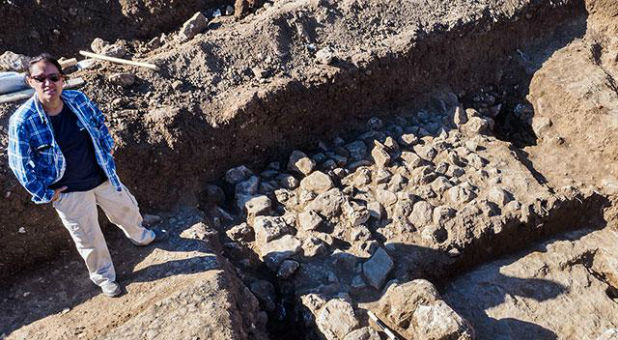Archaeologists Discover 7,000-Year-Old Jerusalem Settlement
During a pre-construction survey prior to building a new road, Israel Antiquities Authority archaeologists excavated a 7,000-year-old settlement in a northern Jerusalem neighborhood.
IAA archaeologists say the rare find dates to the Chalcolithic period, or the fifth-century B.C., when people began using copper (chalcos in Greek), not just stones, to make tools (lithos in Greek).
The team uncovered two houses and a treasure trove of relics, including well-preserved floors, pottery, beads and tools.
“The Chalcolithic period is known in the Negev, the coastal plain, the Galilee and the Golan, but (it) is almost completely absent in the Judean Hills and Jerusalem,” said Dr. Omri Barzilai, head of the IAA’s prehistory branch. That makes the find in the predominantly Arab neighborhood of Shuafat even more unusual.
The few traces of settlements during this period have been extremely sparse, Barzilai said, so evidence of a thriving 7,000-year-old settlement in Jerusalem is indeed unique.
Excavation director Ronit Lupo explained the significance of some of the discoveries.
“Apart from the pottery, the fascinating flint finds attest to the livelihood of the local population in prehistoric times: small sickle blades for harvesting cereal crops, chisels and polished axes for building, borers and awls, and even a bead made of carnelian, indicating that jewelry was either made or imported,” Lupo said.
“The grinding tools, mortars and pestles, like the basalt bowl, attest to technological skills as well as to the kinds of crafts practiced in the local community,” she continued. “We also recovered a few bones of sheep (and) goat(s) and possibly cattle. These will be analyzed further in the Israel Antiquities Authority laboratories, permitting us to recreate the dietary habits of the people who lived here 7,000 years ago and enhancing our understanding of the settlement’s economy.”
Meanwhile, archaeologists from the Hebrew University of Jerusalem are excavating the remains of a 12,000-year-old village in the Jordan Valley.
The site, named NEG II and located near the middle of a stream flowing west to the Sea of Galilee, has yielded finds from the Old Stone Age (Paleolithic period) and the New Stone Age (Neolithic period), including flint and bone tools and human burial remains.
“It is not surprising that at the very end of the Natufian culture, at a suite of sites in the Jordan Valley, that we find a cultural entity that bridges the crossroads between late Paleolithic foragers and Neolithic farmers,” said Hebrew University archaeologist Dr. Leore Grosman, who led the excavation.














































